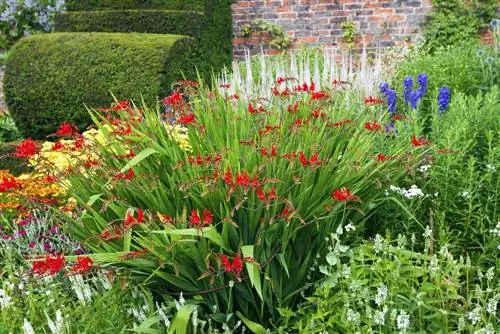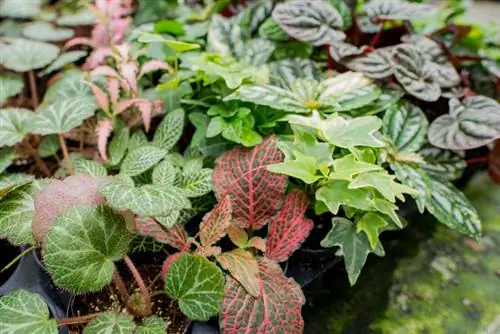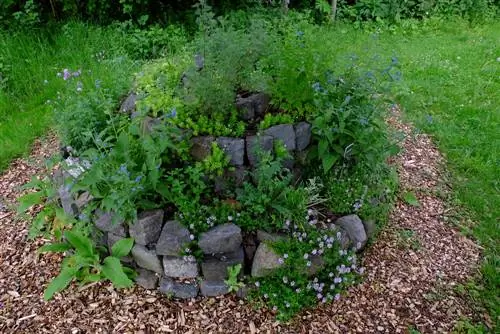- Author admin [email protected].
- Public 2024-01-05 20:48.
- Last modified 2025-01-23 11:22.
Do you want a perennial bed with optimal planting distances so that after a few years you can see a beautiful, closed plant cover that still leaves enough space for each individual perennial? Here's how you can do this.

How do I calculate the correct planting distance for perennials?
To determine the optimal planting distance for perennials, divide them into three groups: leader plants (60 cm apart), group plants (40 cm apart) and filler plants (25 cm apart). Alternatively, you can use a third of the growth height or the growth behavior for the calculation.
What you need to know to choose the right planting distances
Many hobby gardeners buy their perennials in pots of ten at the garden center. The plants integrated into the pot are often more or less the same size. Of course, it is difficult to estimate the growth rate of the different species in the bed.
But: In order to be able to plan your perennial bed ideally, you need to know the final sizes of all the perennials you want to plant. You should also be aware of the growth habit(s) of the specimens.
Recommendation: Find out more directly from the staff at the garden center. Alternatively, you can also take a look at the catalogs of well-stocked perennial nurseries.
Bed planning: dividing the perennials into three groups
When it comes to bed planning, hobby and professional gardeners distinguish between three groups:
- Leader or scaffold plants
- Companion or group plants
- Filler or scatter plants
Group 1: Leader or scaffold plants
Tall perennial species with large flowers and/or other striking appearance.
Examples: silver candle, water can
Use: individually or maximum in groups of twoPlanting distance: at least 60 centimeters
Group 2: Companion or group plants
Smaller and less conspicuous than leading perennials.
Examples: Tall sedum, coneflower
Use: in groups of three to ten plantsPlant spacing: at least 40 centimeters
Group 3: Filler or scatter plants
Relatively small perennials with no outstanding features.
Examples: wild poppy, chamois
Use: as required in smaller or larger groups at the edge of the bed (often to close existing gaps between larger perennials)Planting distance: at least 25 centimeters
Precise calculation options
The fist numbers above are too inaccurate for you? Then stick to the following variants of calculating the perfect planting distance for perennials:
- Orientation to the individual growth height of leader and group plants: Plan around a third of the final size as the planting distance. This will suit most species.
- Growth behavior of filler perennials: Does the respective plant have clumpy growth? Or does it spread through ground shoots? In the former case, 20 centimeters is absolutely sufficient; in the second case, 30 centimeters or more can also make sense.
Final advice
Divide the bed prepared for planting the perennials into a grid with 50 x 50 or 100 x 100 centimeter areas. This makes it easier for you to put your hatched plan into action (you don't have to constantly reach for the ruler).
Note: To mark it, simply sprinkle fine lines on the soil using light-colored sand.






